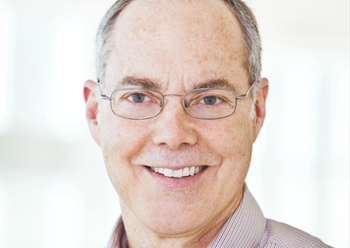 |
Rob Lewis, Ph.D. |
The students have since done research in UNMC labs, witnessed the delivery of a cancer diagnosis, worked with cadavers in the gross anatomy lab, shadowed health care professionals and participated in several other activities.
The alliance, which is designed to help students take their first steps toward health care careers, functions thanks to the efforts of UNMC faculty and staff members who give their time to teach the students.
|
Below, Dr. Lewis talks about his experience with the alliance.
What has stood out for you as you worked with the students in the high school alliance?
I was impressed by how many questions they asked and what excellent questions they were. It was clear that they were engaged and thoughtful.
|
I made one main point. They can look at cancer — and every other aspect of heath and disease — as resulting from some combination of genetic and environmental influences. Genes and environment explain everything.
What would you tell another faculty member who was considering becoming active in the alliance?
The experience was surprisingly rewarding. The most difficult task was determining the level of sophistication and the amount of material to present so that it was understandable yet interesting.
Describe a particularly memorable experience you had working with the alliance students.
My most memorable experience stemmed from a question asked by a student that would have been extremely insightful for a faculty member, let alone a high school student. I remember wishing I could get that student to come work in my lab.